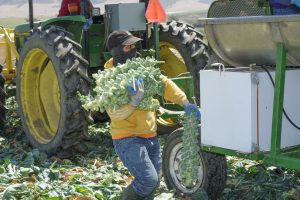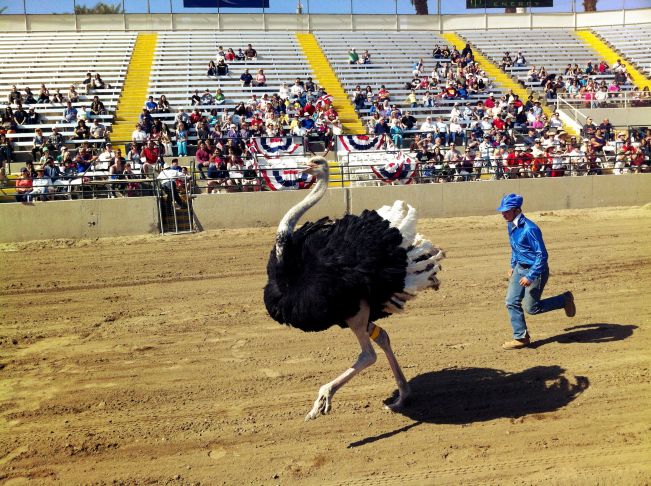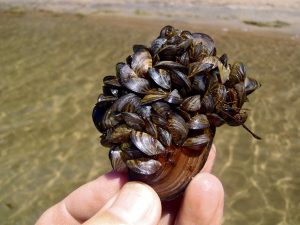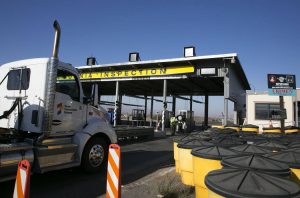By Jennifer Best
(Excerpted)
Pesticides, herbicides, organics and technology are all hot topics in the agriculture community, but labor issues, particularly a lack of available workers, are the chief concerns this year for large-scale operations on the Central Coast.
“Labor is pretty much front and center right now. I was just talking to our general manager about H-2A workers we’re trying to bring in, but they’ve been delayed since May 1,” said Philip Adam, operations manager at Santa Maria-based Innovative Produce.
The H-2A Temporary Agricultural Workers Program grants temporary visas to non-citizen workers specifically employed in agriculture.
According to the U.S. Department of Labor, 160,084 H-2A Temporary Agricultural Labor Visas have been certified nationwide. At 18,886, Georgia received the greatest percentage of those visas. California came in fifth at 12,292 behind North Carolina, Florida and Washington. Louisiana, Kentucky, Arizona, Michigan, and South Carolina rounded out the top 10.
The temporary work visas are granted when, among other things, employers can “demonstrate that there are not enough U.S. workers who are able, willing, qualified, and available to do the temporary work,” according to the U.S. Department of Homeland Security.
Workers granted the H-2A visa may remain in the United States for up to three years before they are required to return to their home country. They may bring their spouses and children, but spouse visas preclude them from working. H-2A visa holders must leave the U.S. after three years, but may reapply for temporary worker status again after three months away.
“H-2A workers are going to be the big solution for the foreseeable and near future. We’re trying to find ways to sustainably house, bring in, and train these workers to bring them into the community and add a lot to it,” Adam said.
The seventh-generation Santa Maria Valley farmer works with his father, Innovative Produce owner George Adam, other family members and a host of employees to cultivate 1,800 acres of conventionally and organically grown fruits and vegetables including lettuces, celery, broccoli, cauliflower, cilantro, Brussels sprouts, kale, strawberries, blackberries, peppers and squash.
“California agriculture is very different from agriculture in other parts of the country because our productivity rates, because our climate and soils are so much better than other places in the country. That security our climate gives us allows us to make big investments with some certainty,” Philip said.
Technology a possible solution
Investment in technology has further advanced California farmers, and may ultimately serve as a solution to the worker shortage.
“To ease the labor crunch, we’re doing everything we can to automate, from weeding to thinning. You’ll see limited thinning crews in the next five years. A lot of those jobs are going to be replaced by machine,” Philip said.
Meanwhile, Innovative Produce has leveraged its most experienced workers to turn out both higher production through the incentive of piece-work. The result has been greater production in spite of limited employees, and increased pay for the workers.
“Instead of paying by the hour, we pay by the carton. It’s worked out really well. It’s given a lot of people a chance to make a lot more money in a shorter amount of time. It’s allowed us to control costs,” Philip said.
Piece-work an incentive
Some of Innovative Produce’s better crews now paid by the carton can turn out 1.6 to 1.7 times the amount of product as they did when they worked for hourly pay. They are also earning more.
“It’s really just a marginal cost/benefit decision,” Philip explained.
He sees farmers making tough decisions about employment in the future as well.
“If minimum wage goes to $15 and 9-hour days, and we have to go to overtime to complete the work, that makes the machines more attractive. I don’t think it’s a bad thing. The tougher rules that are in place on California farmers have forced us to innovate a lot more than other places in the country,” he said.
Precision agriculture has become a keystone to successful operations.
“We’re getting everything dialed in with fertilizers and water application. Planting technology has gotten better. Technology really is driving progress in our industry now. Those that aren’t taking advantage of technology aren’t going to last. If you don’t have great production, don’t have great piecework setting all your ducks in a row from beginning to end, you’re not doing business in California agriculture in the future,” Adam said.












